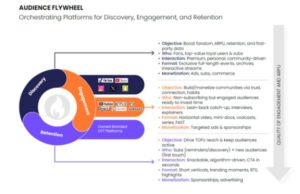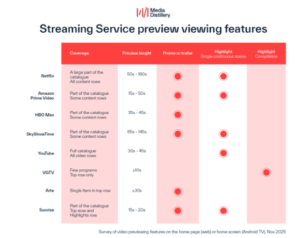Ateme – Reducing streaming’s carbon footprint through innovation

Daniel Patton, Vice President, Product – Origination and Delivery, Ateme.
The video streaming industry, which now accounts for 60-80% of global internet traffic, is facing increasing scrutiny due to its significant contribution to carbon emissions. According to a report from The Shift Project, internet activity is responsible for approximately 4% of global greenhouse gas emissions, a figure that is expected to rise as demand for streaming services grows. This surge in video consumption has driven the expansion of data centers, network infrastructure, and consumer devices, all of which add to the industry’s environmental impact. In response, companies like Ateme and other video processing vendors are focusing on innovations such as advanced video codecs, efficient compute platforms, and AI-driven optimizations to reduce data size, energy consumption, and overall carbon footprint in the streaming ecosystem.
How codecs reduce data size and energy consumption
A key area of innovation in video streaming is the implementation of highly efficient codecs designed to reduce the data required for an optimized user experience. Codecs such as H.264 (AVC), H.265 (HEVC), and newer ones like AV1 and VVC (Versatile Video Coding) achieve this by compressing video files and eliminating redundancies. HEVC, for example, can reduce bitrates by up to 50% compared to its predecessor, H.264, while newer codecs like AV1 and VVC offer additional efficiencies of 30-50% over HEVC.
These improvements in video processing efficiency lead to cascading energy reductions across storage, delivery, and network infrastructure. By compressing video files more effectively, advanced codecs minimize the storage space required on servers and data centers. This increased efficiency also reduces the overall throughput needed to deliver streams to large audiences, thereby decreasing the capacity demands on Content Delivery Networks (CDNs).
The impact of bitrate reduction varies depending on the last-mile connectivity. For mobile networks, lower bitrate content requires less power to deliver, creating a direct correlation between bitrate and energy consumption. While this power reduction doesn’t apply to static network components of a fixed network, adopting advanced codecs with lower network requirements for both mobile and fixed networks can curb infrastructure growth and its associated power demands, even as the streaming video market expands.
Finally, lower bitrates can also decrease the power required on consumer devices to playback content. However, broader adoption of newer codecs necessitates devices that support hardware decoding, which is significantly more resource-efficient (4-10x) than software decoding. For example, Apple recently added support for AV1 hardware decoding in the iPhone 15, and Qualcomm has indicated that upcoming Snapdragon processors will support VVC decoding.
Reduce compute requirements
While software itself does not consume power, the compute platforms it runs on certainly do. So the challenge to technology vendors – “do more with less.” ARM and x86 processor manufacturers continue to innovate by developing CPUs that reduce energy consumption both during operation and, more critically, when idle. Additionally, cloud compute providers are actively lowering their carbon footprints by transitioning to renewable energy sources.
Software vendors are also evolving their solutions to contribute to carbon footprint reduction. Video processing vendors, for example, are enhancing video encoding efficiency to enable more encodes on the same server platform. Video delivery vendors are implementing just-in-time packaging to process only the content being requested, which reduces compute and CDN storage requirements. Finally, by bolstering security and anti-piracy measures, content owners can diminish the usage—and associated carbon footprint—of unauthorized viewers.
Leveraging viewer data and AI
In traditional broadcasting, linear content was transmitted over-the-air, with viewership estimates made after the fact. In contrast, the streaming model provides detailed data on every viewer—tracking when they started watching, how long they watched, the devices they used, and the profiles delivered to them. One way to leverage this new wealth of data is to assess whether enough viewers are using devices with advanced codecs. If the energy savings from these devices, using a more efficient codec, outweigh the energy cost of processing the video in an additional format, this can significantly reduce the carbon footprint of the audience watching the content. Leveraging other data sources and training AI models to make these dynamic decisions offers a glimpse into the future.
Data can also be used to enhance decisions during the encoding process. By analyzing a vast history of video-quality test encodings, which have been evaluated by skilled video quality engineers, Machine Learning (ML) techniques can train algorithms to match outputs to the visual quality assessments of experts. Combined with other video processing algorithms, this not only improves the quality of the viewing experience but also, from a carbon footprint perspective, can recommend using fewer variants or lower bitrates for each variant. This results in lower storage space requirements (up to 50%) and reduced network bandwidth needed to deliver the video experience.
Consumers play an integral role
While technology vendors will continue to innovate to reduce the carbon footprint, consumers also play a crucial role. According to a recent Parks Associates study, the average US household now watches over 43 hours of video per week. As consumers make daily viewing choices, they can have a direct impact on the power required for video playback by selecting the quality level of their viewing experience. By empowering consumers to choose the quality of their individual experience, each person can actively contribute to reducing the carbon footprint associated with streaming video.
Summary
As video streaming continues to dominate global internet traffic, the industry’s carbon footprint is increasingly under scrutiny. Advanced video codecs, efficient compute platforms, and AI-driven optimizations offer promising solutions to reduce data size, energy consumption, and the environmental impact of streaming. However, the collective effort of technology vendors and informed consumer choices is crucial for achieving meaningful sustainability in the streaming ecosystem. By adopting more efficient technologies and making conscious decisions about viewing quality, both industry players and consumers can significantly contribute to reducing the carbon footprint associated with video streaming.









